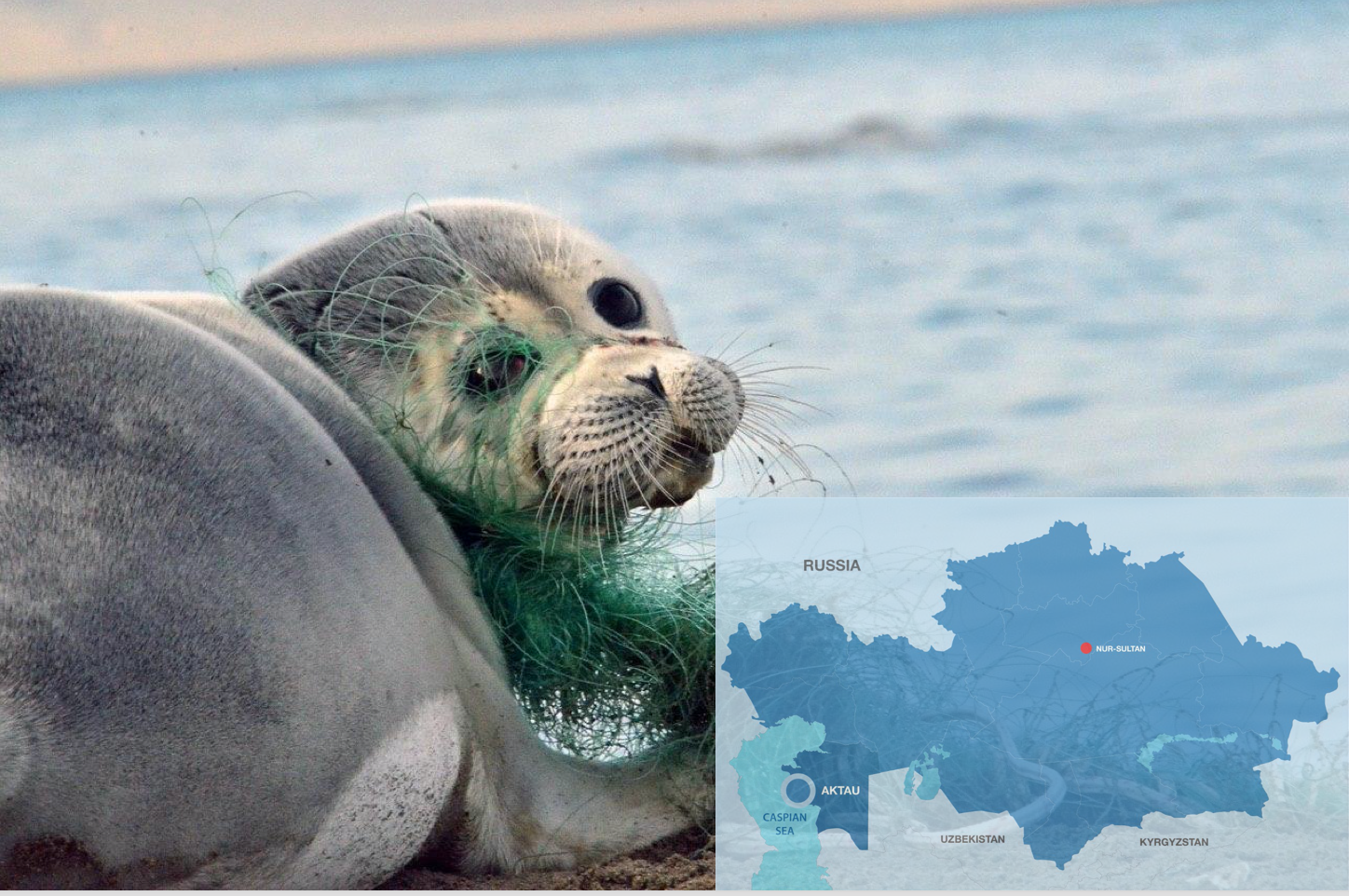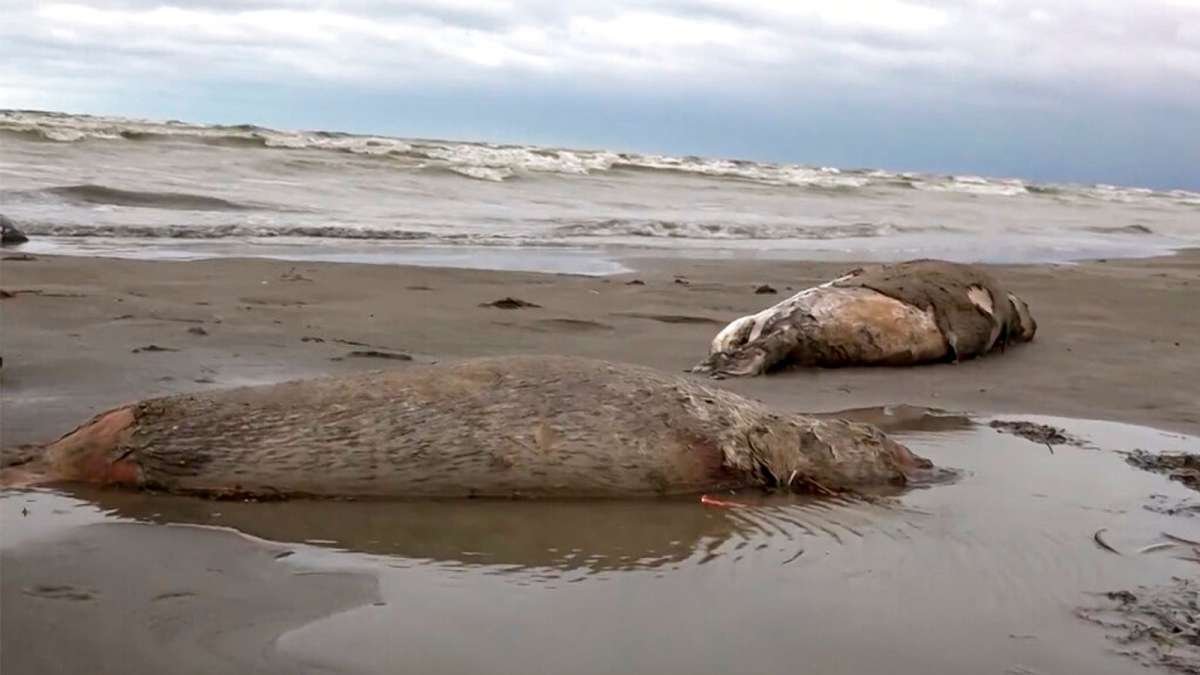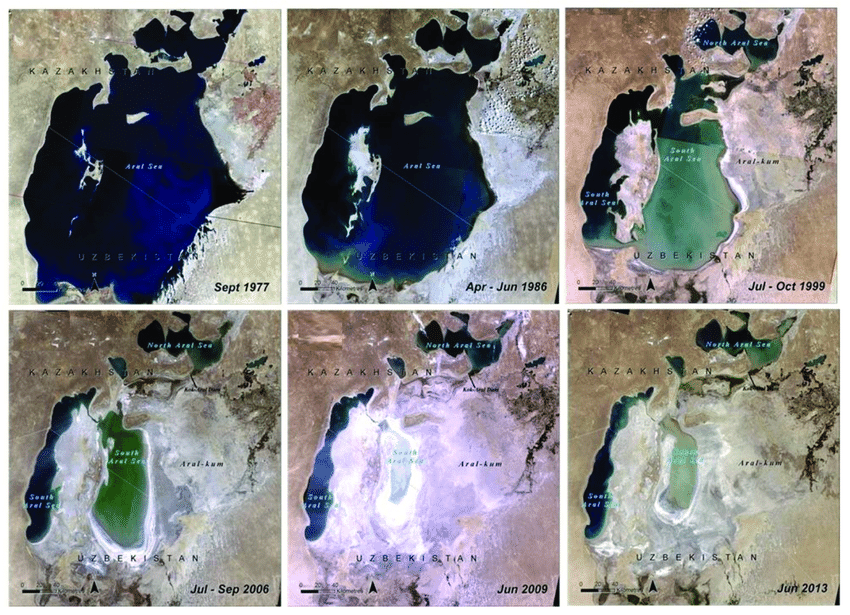Dying Sea Lions
The Caspian seal, often referred to as sea lions, are dying at an alarming rate. Pollution, habitat loss, and hunting have reduced their population by more than 90% in the last century. Picture on the right.
Chemical Spills
Oil and gas extraction in the Caspian Sea has led to numerous spills, contaminating the water and devastating local ecosystems. These spills affect not only marine life but also the livelihoods of local communities.
Ural River that flows into Caspian Sea (December 2018): Approximately 119 tons of fish perished near Atyrau, with investigations pointing to chemical pollution as the primary cause. Picture on the right.
Other Environmental Concerns
Overfishing, invasive species, and rising sea levels due to climate change are additional threats to the Caspian Sea's delicate balance.
Taking Action Through Robotics: A Vision for the Caspian Sea
My passion for addressing environmental challenges inspires me to use robotics to protect the Caspian Sea, tying directly to my pursuit of an MS in Design. For my capstone project, I plan to build a robotic system to tackle pollution and microplastics in the Caspian Sea. This robot will monitor and clean contaminated areas, focusing on oil spills and plastic waste that endanger marine life like the Caspian seals.
Through this work, I hope to refine scalable solutions that can eventually be adapted to help protect oceans worldwide. This vision aligns with my long-term goal of merging engineering, design, and environmental stewardship to create sustainable solutions for global ecological challenges.
Here is an example of some parts I am thinking of putting together for my capstone project at the MS in Design program, if I am fortunate enough to be accepted. These components—water filtration systems, pumps, electronic circuits, and 3D-printed parts—form the basis of a concept for a robot designed to clean the Caspian Sea, aligning with my passion for environmental preservation and human-centered design.
The water filtration units, equipped with high-efficiency filters, are ideal for extracting pollutants, debris, and microplastics from the sea. The pumps would power the filtration process, ensuring a continuous flow of water through the system, while the compact and modular 3D-printed parts allow for lightweight, customizable designs that can be adapted to various aquatic conditions. The electronic circuitry, coupled with sensors, could enable the robot to navigate autonomously, detect obstacles, and optimize cleaning routes. Additionally, color-coded elements and ergonomic handles could simplify maintenance and deployment by field operators, combining usability with functionality.
This design reflects my goal to create solutions that merge technological innovation with environmental impact. Through the MS in Design program, I hope to refine these ideas, focusing on user-centered and sustainable design principles to bring this vision to life.
How We Lost the Aral Sea
Once the world's fourth-largest inland lake, the Aral Sea was a vital lifeline for Central Asia, supporting thriving ecosystems, vibrant fisheries, and local communities. However, in the mid-20th century due to soviet government (they were completely aware of what it will lead to in future), large-scale irrigation projects diverted its primary water sources—the Amu Darya and Syr Darya rivers—for cotton cultivation under Soviet directives. By the 21st century, the Aral Sea had shrunk to about 10% of its original size, splitting into smaller water bodies, such as the North Aral Sea and the South Aral Sea, with some areas completely dried out.
Over decades, this unsustainable water management caused the sea to shrink dramatically, leaving behind barren salt flats known as the Aralkum Desert. The environmental consequences were catastrophic: collapsing fisheries, toxic dust storms carrying pollutants across regions, and severe public health crises for local populations.
The story of the Aral Sea serves as a cautionary tale of human-induced ecological disaster, underscoring the urgent need for sustainable water practices and global cooperation to prevent similar tragedies. Today, small-scale restoration efforts offer glimpses of hope, but the scars of this loss remain a stark reminder of the fragile balance between development and nature.








